Subcutaneous parasites, which live in the thickness of human skin, damage the skin and cause inflammation. They can penetrate from the main "deployment" to other organs and cause dangerous diseases. Most subtypes of helminths are found in southern countries, and the average person can get them while on vacation or on a business trip there.
The danger of subcutaneous helminth infestation is that it is asymptomatic during its incubation period, which can last for years. This then interferes with the treatment and reduces its effectiveness.
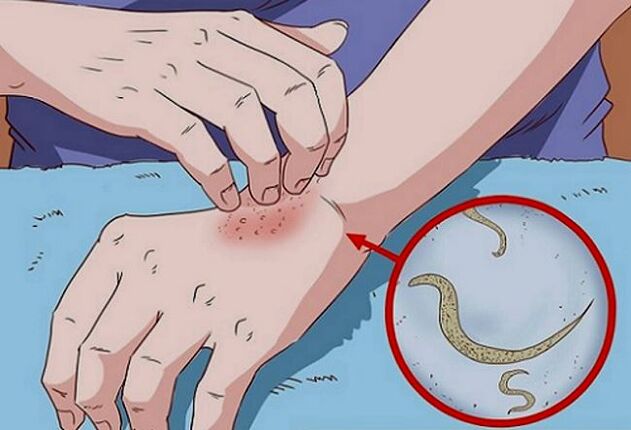
What are subcutaneous parasites?
Worms not only affect a person's internal organs but also their skin. Having penetrated into its thickness, they damage the epidermis, eat its cells, and excrete it. The waste products of worms under the skin cause intoxication, because they contain toxic substances. And the longer the worm is under the human skin, the more obvious the invasive symptoms.
Subcutaneous worms cause many diseases, as they affect the immune and lymphatic systems of the human body. For example, parasites can stimulate the development of elephantiasis - elephantiasis. It interferes with the circulation of lymph in the body. This leads to an increase in the mass of the limbs and their deformation. In the final stage, the damaged organ is covered with ulcers, necrosis develops.
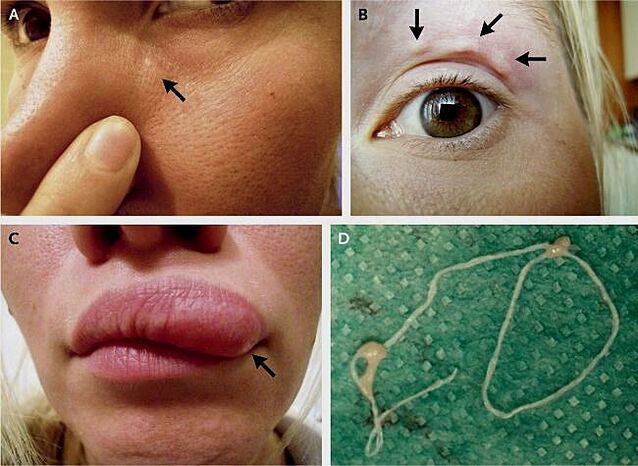
Human helminths that live under the skin include:
- Nematodes of the genus Dirofilaria. Causes infection with dirofilariasis. Infection of the body occurs through the bite of blood-sucking insects: lice, fleas, ticks, which are carriers of larvae from one host to another. An adult dirofilaria can grow up to 30 cm long. Reproduction occurs in the thickness of the skin, after which the female lays the bacteria into the bloodstream.
- Filariae. Causes filariasis. They are parasitic roundworms. An adult can reach almost half a meter in length, while the body diameter is no more than 0. 3 mm. The carriers of filariasis are blood-sucking insects that transmit parasitic larvae from one host to another.
- Worm larvae. A person provokes the development of cysticercosis. Infection occurs through the intestinal tract, where parasite eggs enter along with water, food, and dirt. Then, under the action of gastric juice, their shells are destroyed - the larvae come out. They are then carried throughout the body along with the bloodstream.
- Blood fluke of the genus Schistosoma. It's called schistosomiasis. An adult can reach 2 cm in length. Reproduction occurs through the entry of larvae into the body - cercariae along with water.
Main symptoms and treatment
If a person has parasites under the skin, then first of all this is reflected in their condition: the skin develops blisters, changes in color, scars and small cracks appear. This is due to the fact that the "guests" damage the skin, eat its cells and poison the residues.
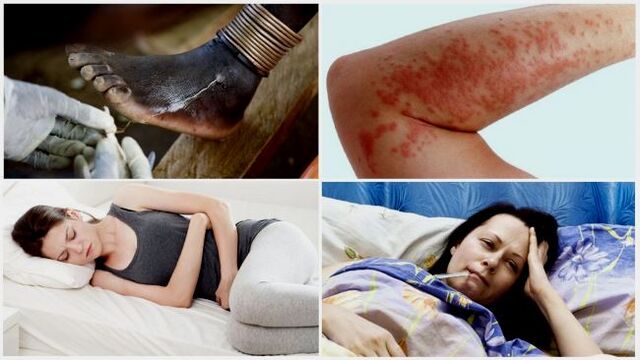
Human subcutaneous parasites that cause symptoms of helminth infestation:
- Allergic rash;
- Cough;
- Decreased immunity;
- Itchy;
- Skin peeling, skin redness;
- Appetite problems;
- Pain in joints and muscles;
- Sleep disorders;
- Irritability;
- Apathetical.
Parasites on the skin in a patient cause malfunctions of the whole body: anemia develops, dysbacteriosis, etc. v.
Treatment of parasitic diseases is selected individually. The choice of method is influenced by the degree of damage to the body, the symptoms and the type of pathogen. In some cases, in addition to drug treatment, surgery may be necessary to remove the worms under the skin or even the entire affected organ.
Together with anthelmintics, antihistamines, vasoconstrictors are used. If the inflammation has started due to worms that live under the skin, then it should be treated with antibiotics.
You should not get rid of helminths that live under the skin on your own with the help of traditional medicine - as practice shows, they are ineffective and can be harmful to human health.
Symptoms of filariasis
The subcutaneous worm that causes this disease - filariae - appears in the human body after being bitten by an infected blood-sucking insect. The highest number of cases are recorded in tropical and subtropical countries.
These subcutaneous worms in humans are capable of living in the human body and not manifesting for long: the incubation period of the disease can be as long as 7 years. This makes diagnosis difficult.
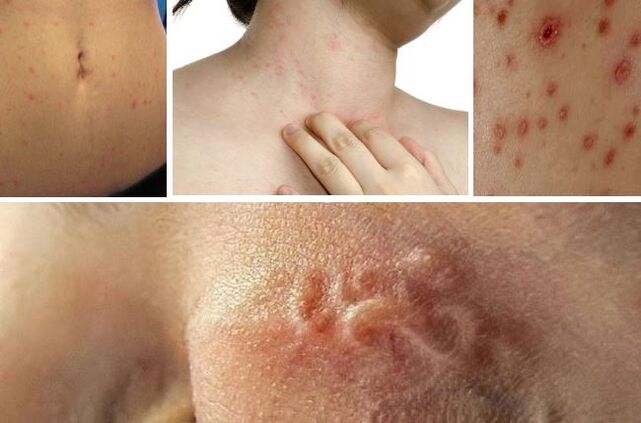
Symptoms and manifestations of invasion appear gradually, as the parasite grows under the skin of the person and affects surrounding tissues. The most common manifestations of filariasis include:
- Hive;
- Itchy;
- warts;
- eczema;
- Small hard lumps under the skin.
As the disease worsens, fever, generalized weakness, headache, and drowsiness may occur.
Treatment for filariasis should take place in a hospital. For drug deworming, antiparasitic drugs are used. The effectiveness of therapy is monitored by blood tests. In case of no improvement, the patient must undergo surgery to restore the flow of lymph from the affected organ.
Helminth disease and schistosomiasis
Tapeworm larvae cause tapeworm disease. This type of helminth is distinguished by its ability to survive: it is enough for just one parasite to enter the human body, and they will quickly develop into adults, which will then begin to multiply.
This feature makes the disease difficult to treat - if the head is still left after surgical removal of the worms, the parasites will grow back. Despite the fact that the adult tapeworm resides in the human intestine, its larvae are still spread throughout the body by the bloodstream, including under the skin. Then they can stay there for a long time - from 5 to 30 years.
If, with cysticercosis, the worms are wrapped under the skin or in the muscle tissue, then for a person the disease is asymptomatic. However, the location of the parasite can be determined by tumor-like growths that will protrude from the skin. By touching the tuber, it can be determined that it is hollow inside. The skin of the shoulders, upper chest and palms often become favorite places for tapeworm larvae.
With cystic disease under the skin, do not use drugs, patients need to be supervised by a doctor. This is due to the fact that when the parasites die after using antiparasitic agents, toxins begin to enter the body. In turn, they can cause a strong allergic reaction.
The larvae of schistosomes, cercariae cause schistosomiasis in humans. Infection occurs through water. The first symptoms of subcutaneous worms appear 10-15 minutes after penetration. This is because the worms under the skin secrete large amounts of their own excreta, which causes an allergic reaction to the poison in humans.
First symptoms:
- Severe itching;
- Hive;
- Rash.
Then there is a lull, after which (after 1-2 months) the acute phase of schistosomiasis begins, which indicates neglect of the disease:
- Fever;
- Nocturnal hyperhidrosis;
- Hive;
- Dry cough;
- Changes in the qualitative composition of blood.
Currently, the treatment of schistosomiasis is limited to the use of 2 dewormers. In the acute phase of the disease, steroid drugs, antihistamines, anti-inflammatory drugs are also used.
Dirofilaria and Morgellon virus
These two diseases have similar symptoms, with some differences. With dirofilariasis, the patient notices a small nodule under the skin that moves when palpated. This is a sign that a worm under the skin has become attached to the body. Similar infiltrative manifestations were also observed with Morgellon virus.
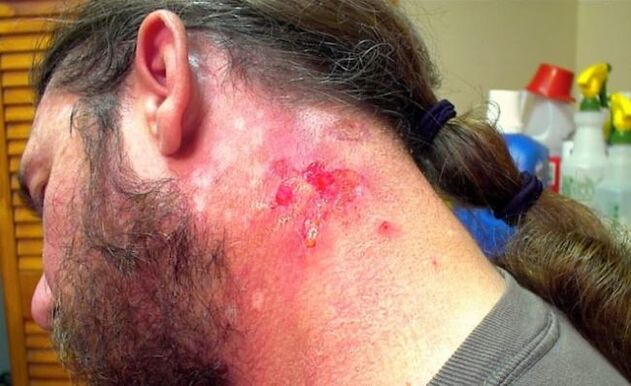
The basic difference between these two parasites is that dirofilaria do not bother their host: the subcutaneous bubble is not irritating, it can appear and disappear over time. Worms parasitize in the hands, feet, near the eyes, nose, on the chest, in men - in the genitals. If dirofilaria is under the skin of a person for a long time, then under the influence of the poison the person's body temperature rises and feels weak.
With Morgellon virus, there is an intense itching sensation on the skin where the helminth has penetrated. In the absence of medical assistance, the wound will bleed, and soon eczema will appear. This increases the risk of the body being infected with other diseases many times over.
The best treatment for parasites is surgical removal.






































